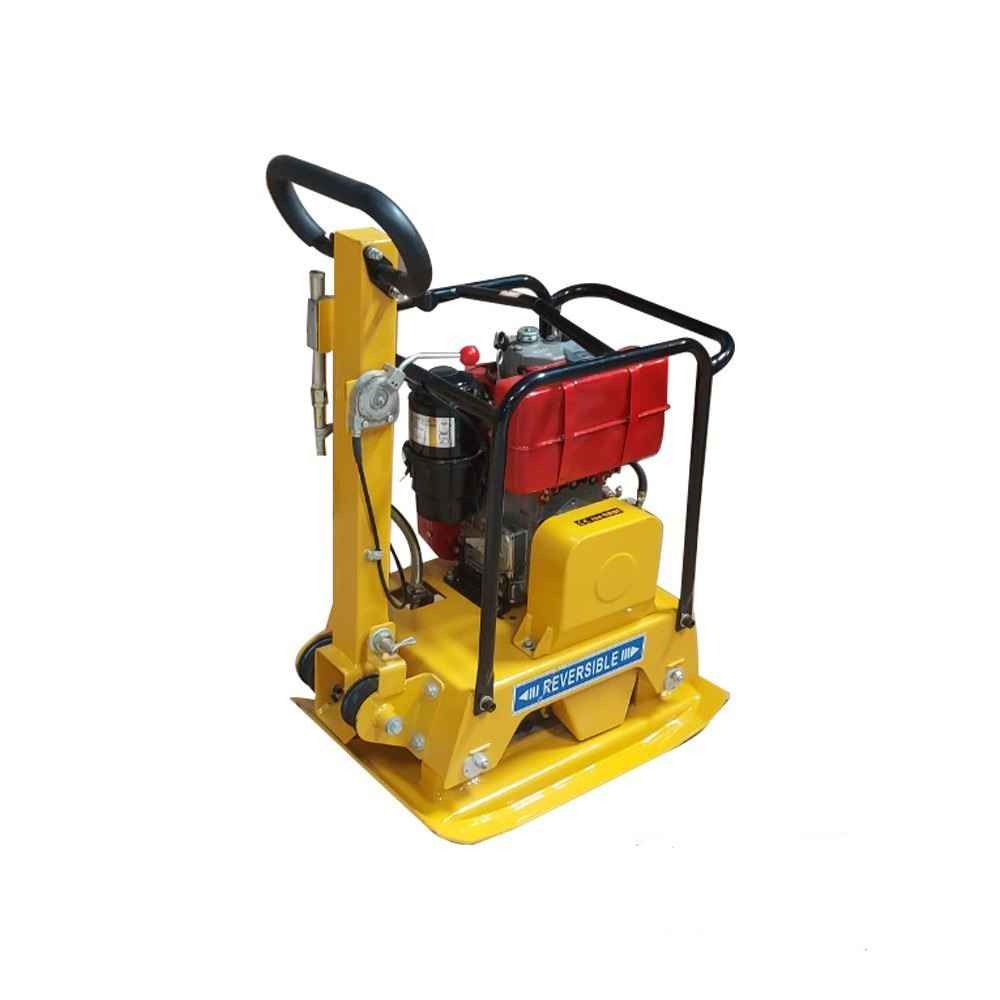Description
A reversible plate compactor, also known as a reversible vibratory plate compactor, is a powerful construction machine used for compacting soil, gravel, asphalt, and other materials. Unlike standard plate compactors, reversible plate compactors have the unique ability to move in both forward and reverse directions.
Dual Direction: The ability to move forward and backward allows reversible plate compactors to maneuver easily in tight spaces and reverse out of corners without the need for manual lifting.
Engine Power: They are typically powered by gasoline engines, providing sufficient power for compacting larger areas effectively.
Reversible Plate Compactors, on the other hand, have a plate that can be rotated and can be used in both forward and reverse directions. This allows them to be used in tight spaces and in situations where a forward plate compactor might not fit.
JP Engineering Services provide a Reversible Plate Compactor for easy to reach located controls large shock mounts reduce vibration to the handle and centrally located lifting bar allows easy transportation in and out of trenches
A Plate Compactor is a versatile and robust construction machine used for compacting soil, gravel, sand, and asphalt surfaces, ensuring a stable and level foundation for pavements, roads, driveways, and flooring. Known for its ease of use and high efficiency, the plate compactor is an essential tool in both large-scale infrastructure development and smaller landscaping or renovation projects. It delivers consistent compaction over wide surfaces, making it ideal for both commercial and residential construction applications.
Technical Specifications
Plate compactors typically feature a heavy-duty steel base plate ranging in size from 400 mm to 600 mm in width, depending on the model. The machines are powered by reliable petrol or diesel engines such as the Honda GX160 (5.5 HP) or similar, with power output ranging from 3.5 HP to 6.5 HP. These engines generate a vibrating frequency of around 5,500–6,500 vibrations per minute (vpm) and produce a centrifugal force of 10 kN to 25 kN, allowing effective compaction depths up to 300 mm. Most models also come with forward travel (and optionally reversible travel) for better maneuverability. The operating weight typically ranges from 75 kg to 120 kg, depending on the plate size and engine capacity.
Performance & Applications
The plate compactor is designed for optimum performance on granular soils like sand and gravel, and it is also effective in light asphalt compaction. It is ideal for use in preparing base layers before laying tiles or bricks, compacting subgrades for roads and walkways, and performing maintenance on asphalt surfaces. Some models come equipped with a water tank and sprinkler system, especially useful for asphalt applications, preventing hot asphalt from sticking to the plate. Optional rubber mats can also be used when compacting pavers to prevent damage.
User-Friendly Features
Modern plate compactors are designed with user comfort and convenience in mind. Features such as vibration-dampened handles, foldable or removable handles for transport, and lifting hooks enhance mobility and safety. The machine's low-maintenance design, coupled with durable components and easy engine access, reduces downtime and extends service life. Whether used by professional contractors or DIY builders, a plate compactor ensures faster job completion, uniform surface preparation, and long-term structural integrity.


 Brochure
Brochure Call Us
Call Us Whatsapp Now
Whatsapp Now